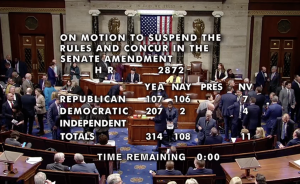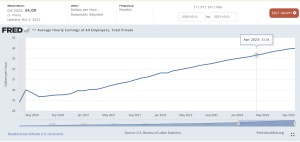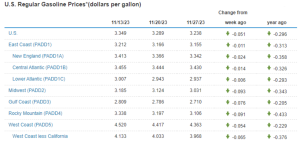I had a bad stutter for years,
From mid-seventh grade up thru high school I struggled mightily to get the words out, to avoid humiliation, laughter, scorn and – worst of all – pity.
As a formerly eloquent speaker and school play actor I had no idea what happened, why, how to fix it, and whether I’d ever be able to stand up in front of people and just…say my name.
It came and went for years after high school…I have a very painful recollection of stuttering badly while giving a talk about exercise physiology during graduate school, watching the group suffer along with me.
Over the years I forced myself into situations again and again as I tried to overcome stuttering…for reasons unknown my stutter eventually faded into a distant if very painful memory.
I relate this because I am appalled by the media’s laziness, stupidity, crassness, and total lack of empathy all on full display when discussing President Biden’s occasional word stumbles. He’s not going thru dementia, nor does he have Alzheimer’s, and he’s not suffering the after-effects of a stroke.
Nope, he’s got a stutter.
Unlike me, the President has not fully conquered his stutter, yet he puts himself out there every day, knowing all too well he’s going to be laughed at, mocked, and demeaned because he stutters.
The meme-makers, mockers and insulters are pathetic indeed, seeking to drag down a person because of a sometimes-disabling condition, to use Biden’s condition to make them feel better about themselves, to get a cheap laugh from equally-pathetic barroom morons.
As for the media, I am furious with TV anchors, pundits, reporters, and editors for failing to address this consistently, fairly and completely. No, these superficial “personalities” would much rather parrot the “he’s old, see he can’t finish a sentence, mixes up his words, mumbles at times, and veers off track…” idiocy.
Well, you idiots masquerading as media those are ALL STRATEGIES STUTTERERS USE TO TRY TO GET THE WORDS OUT.
Mumbling hides stutters.
Mixing up words happens when you are desperately trying to find a word to use instead of the word that’s stuck in your throat.
Not finishing a sentence is because you can’t get the last words out without stuttering.
Going off track – same..
What does this mean for you?
How would you feel if you stuttered? Couldn’t communicate verbally? Got laughed at for something you can’t control?
I thought so. So don’t be a jerk.








